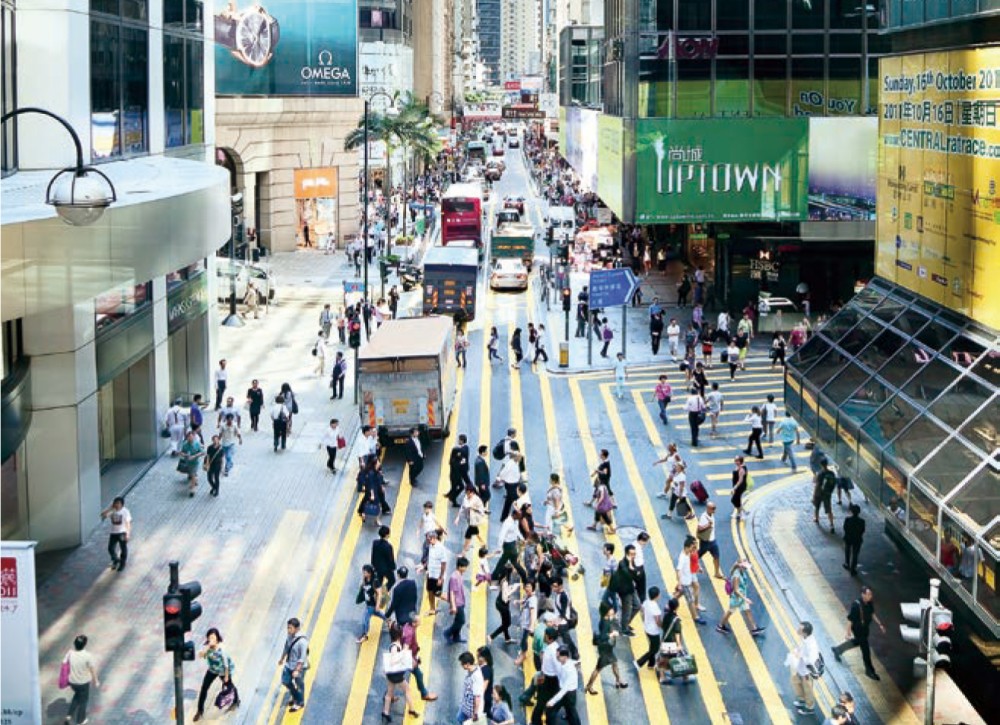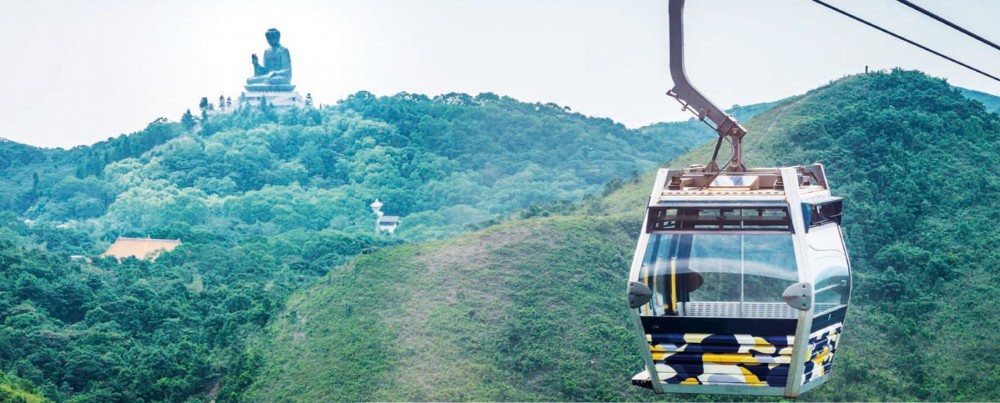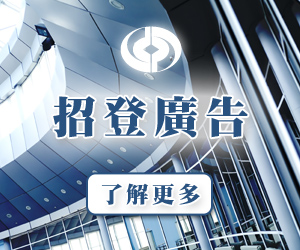The “Lantau Tomorrow Vision” is not only an extremely effective solution to address land shortage in Hong Kong, but also an ideal and appropriate stronghold for grasping growth opportunities in the Guangdong-Hong Kong-Macao Bay Area. It has the added benefit of rationalizing economic, social and livelihood development.
 By convention, the Legislative Council (LegCo) debated on the Motion of Thanks for the Chief Executive’s annual Policy Address moved by Chairman of the House Committee for three consecutive days last month. As expected by the general public, the debate focused on the “Lantau Tomorrow Visions” proposed in the housing and land supply chapter of the report.
By convention, the Legislative Council (LegCo) debated on the Motion of Thanks for the Chief Executive’s annual Policy Address moved by Chairman of the House Committee for three consecutive days last month. As expected by the general public, the debate focused on the “Lantau Tomorrow Visions” proposed in the housing and land supply chapter of the report.
Land shortage is now the single biggest issue in Hong Kong. Having vital bearing on the SAR’s economic and social development, this livelihood issue raised the greatest public concern. Naturally, this biggest artificial island scheme in Hong Kong’s history was the subject of hot discussion in LegCo. It is most frustrating that although the “Lantau Tomorrow Vision” received wide acclaim, there had been criticism both inside and outside LegCo from people who let their standpoint override everything. They went out of their way to cause panic, accusing the vision of “draining the treasury” and arguing that “brownfield sites should be used first”. Even though the Government and expert economists responded in defense that such “reasons” were utterly untenable, the opposition turned a deaf ear. Regarding this Motion of Thanks, some members of the opposition moved amendments to urge the Government to “take back” or “shelf” the “Lantau Tomorrow Vision”. Apparently, they wanted to nip the scheme in the bud.
Huge public interest is at stake
As this issue has great bearing on huge and long-term interest of the Hong Kong public, I deliberately discussed the “Lantau Tomorrow Vision” in length and in focus when I spoke during the debate. My goal was to convey a clear message supported by facts to the society to put the record straight. More importantly, I explained the important impact this scheme has on improving livelihood, and its tactical significance to the future development of Hong Kong. I wanted to lead the public to maintain an open mind and take the broader situation into consideration when examining this scheme, so as to avoid being drawn into the “controversy” created by the specious arguments that the opposition put forward to hinder Hong Kong’s social advancement.
The truth is, as long as you take a high and forward view, you will see that “Lantau Tomorrow Vision” is geared to the needs of the new age and takes full account of Hong Kong’s overall development picture. It is not only an extremely effective solution to address land shortage in Hong Kong, but also an ideal and appropriate stronghold for grasping growth opportunities in the Guangdong-Hong Kong-Macao Bay Area. It has the added benefit of rationalizing economic, social and livelihood development. This scheme can lay a solid foundation for reaching higher ground in the future. Given the limited space here, I will only touch on some of the highlights below.
As a start, the newly opened Hong Kong-Zhuhai-Macao Bridge (HZMB) made further inroads into opening up a trans-Bay Area high-speed transport network. Hong Kong is effectively connected to the western coastal express highway links along Pearl River, enjoying direct access to the processing and manufacturing hinterlands of west Guangdong. The HZMB can serve as a corridor that helps create synergic development of the East Lantau Core Circle, Macao New City Core Circle and Zhuhai-Hengqin Bay Core Circle. It is also a major international sea and land route for ASEAN countries, one that is well-positioned to be a key tactical stronghold of the “Belt and Road Initiative”. “Lantau Tomorrow” is sited right at this strategic location.
An ideal location in proximity to the Bay Area

The HZMB Hong Kong boundary crossing facilities are located on Lantau Island, which is home to the Hong Kong International Airport where flights can reach half the world population within five hours. Lantau is therefore a double portal that provides access both to the world and the Bay Area. It is a perfection realization of Hong Kong’s advantage of “leveraging on the Mainland while engaging itself globally”. In the Government’s planning concept, the 1,000-hectare Kau Yi Chau artificial island alone can create more than 40 million square feet of commercial floor space, the approximate size of Central District. This newly developed Central Business District (CBD) will be served by an extensive transportation network that connects with the traditional CBD in Central on Hong Kong Island, while growing in synergy with the Lantau “Airport City” that juxtaposes high value-added logistics and exhibition/business services. More importantly, this new CBD can keep pace with the vast Bay Area market in development. It goes without saying that it would bring significant advantage.
Improving livelihood to benefit the grassroots
Equally important is that “Lantau Tomorrow Vision” can provide great land resources to address Hong Kong’s dire housing shortage. This would benefit the grassroots, the middle class as well as young professionals. The Government envisions an additional 260,000 to 400,000 residential units from the “Lantau Tomorrow” from 2032, completed in stages to meet the housing needs of 700,000 to 1,100,000 people. Among these units, the Government undertakes to include affordable public housing units, for which 80-90% of Hong Kong households are eligible to apply. Based on a public and private housing ratio of 7:3, the remaining land lots can provide quality residential areas to offer the middle class a wider choice in buying their first homes or replacing old ones. Adequate housing supply is also an incentive to attract expat talents to Hong Kong. It is hopeful that positive impacts of overcoming the housing shortage will branch out across Hong Kong, which will help the local property market develop in a healthier manner. Moreover, the scheme will involve building road and railway infrastructure to connect Sunny Bay and Tuen Mun South with the entire West Rail system. It is indeed a golden opportunity to optimize Hong Kong’s transport infrastructure and mitigate structural traffic congestions in the Western New Territories. Furthermore, the new artificial island will be developed under carbon-neutral city planning, which will support Hong Kong’s march towards low carbon economy.
Today, land shortage is taking Hong Kong by the throat. It is the biggest bottleneck in our way forward and has serious impact on livelihood. Saying no to the “Lantau Tomorrow Vision” blindly without proposing any viable alternative to solve the land shortage issue in the short, medium and long terms is actually stifling the hope of grassroots citizens living in small partitioned cubicles. It also stifles young people’s hope of moving upward and Hong Kong’s hope to diversify its economy and seize Bay Area opportunities. We must do our best to halt this undesirable trend. The opposition’s failure to thwart the Motion of Thanks with amendment motions was just the first battle. I expect to see more assaults from both inside and outside LegCo when the Government applies for the “Lantau Tomorrow Vision” funding and rolls out the scheme. For the future of Hong Kong, I will stay the course and hold fast to my position.
This is a free translation. For the exact meaning of the article, please refer to the Chinese version.
Address : Rm 703, Legislative Council Complex, 1 Legislative Council Road, Central, Hong Kong Tel : 2576-7121
Fax : 2798-8802
Email: legco.office.liao@gmail.com




